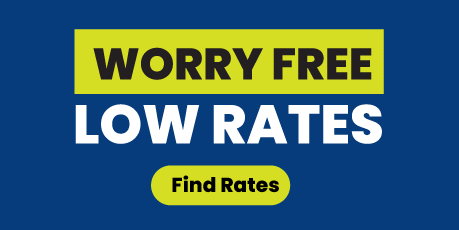What is Loan-To-Value Ratio (LTV) and How Can You Calculate It?


What is Loan To Value (LTV)?
Loan-to-value ratio (LTV) is a calculated ratio that is used in real estate and mortgage finance. This ratio determines how much equity is available in the subject property.
This Loan-to-value-ratio is used to determine eligibility for financing for almost every mortgage loan program.
In this article, we’ll go deeper into the concept of LTV in real estate investment, explore how to calculate it and understand its effects on your mortgage..
What does LTV mean in Real Estate?
Your loan-to-value ratio is a percentage that reflects the appraised value of your desired home compared to the amount you want to borrow. This number helps lenders figure out if you're eligible for financing and plays an essential role in real estate transactions.
LTV determines how much you, the borrower will be invested in the property. The more money you put down to buy a home, the lower your LTV will be.
The lower the LTV, means the lenders risk of loss is decreased because you the borrower have invested in the property as well.
To put it simply, LTV (loan-to-value) assesses the size of the loan you are requesting with respect to your home's actual worth. This metric is used by lenders to determine how much risk they take on when extending credit and what types of loans that you may qualify for based on down payment or existing equity in a property.
The lower the loan-to-value ratio, the less risky your mortgage appears from lenders' perspective; therefore improving chances of being approved for more competitive interest rates!
What is Loan-To-Value Ratio Vs. Combined Loan-To-Value (CLTV) Ratio
The Loan-to-Value (LTV) ratio of a mortgage represents the relationship between the value of a property compared to its outstanding loan balance. Similarly, Combined Loan-to-Value (CLTV) calculates the same percentage but includes all mortgage loans like second mortgages, home equity loans on that property..
This is especially pertinent when multiple loans are taken out on one property, such as home equity loans and Home Equity Lines of Credit (HELOCs). Mortgage lenders will use LTV, and CLTV to determine loan approval and eligibility
Learn how to calculate your Loan-To-Value Ratio
Calculating your loan-to-value ratio (LTV) is easy. Take the outstanding balance of the mortgage loan and divide by the most recent appraisal of the property, then multiply by 100.
For example, if you've been offered a $ 80,000 loan on an appraised home worth $100,000 then all you need do is divide 80k by 100k which equals .80 LTV. Take the .80 x 100 = 80%. This means that the lender will have a loan to value of 80%.
Therefore, you the borrower will have a 20% vested interest in the property. So the more you are invested in the property the lower the risk is to the lender.
How Lenders Use Your LTV Ratio?
Mortgage loan programs have guidelines they follow to determine each borrowers eligibility for loan approval. This is known as underwriting guidelines.
One of the main underwriting guidelines is the maximum loan to value ratio that is in each loan program guidelines. When getting an online mortgage preapproval, or submitting a full loan application, lenders will determine if you meet the LTV guidelines for loan approval.
Different Loan Program's Loan To Value Ratios
Mortgage loan programs like, FHA, VA, USDA, and Conventional have different underwriting and loan to value guidelines.
Because each loan program can differ in LTV, it is good to consider talking with a mortgage loan originator for advice.
Loan To Value for Conventional Loan Programs
- Purchase Loans up to 97% LTV
- No cash out refinance up to 95% LTV
- Cash out refinance up to 80% LTV
When your LTV is greater than 80% under conventional mortgage loans you will be required to have mortgage insurance monthly premium that insures the lender due to the added risk.
There are other factors that may affect the loan to value as described above. If the property is a second home, investment home, manufactured home then the LTV will decrease.
Loan To Value Ratio for VA Loan Programs
Veteran Administration Mortgage Loans grant borrowers the ability to finance 100% of the appraised value for both purchasing and refinancing a home.
- Purchase Loans up to 100% LTV
- No cash out refinance up to 100% LTV
- Cash out refinancing up to 100% LTV
VA mortgage loans do not have monthly mortgage insurance like FHA or conventional loans over 80% LTV. VA mortgage loans do charge an upfront funding fee based on type of military service, and first time or subsequent use. If the Veteran is 10% or more disabled, the upfront funding fee is waived.
Loan To Value Ratio for FHA Loan Programs
Under FHA underwriting guidelines to purchase a home , borrowers can qualify for up to 97.5% loan to value. This means borrowers only need 3.5% down payment when purchasing a home.
These loans tolerate lower credit scores below 620, and affordable interest rates.
- Purchase Loans up to 97.5% LTV
- No Cash out refinance up to 95% LTV
- Cash out refinance up to 80% LTV
Under FHA underwriting guidelines, borrowers will be required to pay a 1.75% upfront funding fee along with a monthly mortgage insurance premium regardless of their loan to value.
LTV Ratio For USDA Loans
USDA rural housing loans offer rural area borrowers the ability to purchase a home with no down payment. This means the loan to value for USDA purchase loans is 100%.
- Purchase Loans up to 100% LTV
- No Cash out refinance up to 100% LTV
Under USDA guidelines borrowers will have to pay an upfront funding fee of 1%, plus a small monthly mortgage insurance fee of .35% of the loan amount divided by 12. These loans offer lower rates because they are insured by the Federal Government.
How to decrease Loan To Value?
In many cases, it is beneficial to lower the loan to value. Mortgage rates are based upon the loan to value at the time of application for a mortgage loan. The more down payment made on purchasing a home or the higher the home appraises for on refinances lowers your loan to value.
Consider making A Larger Down Payment
Saving up for a larger down payment may be difficult, but it's one of the quickest ways to reduce your Loan-to Value (LTV). By boosting the amount you can offer as a down payment, you will reduce the overall sum that needs borrowing - resulting in lower LTV.
We provide a mortgage calculator to help you estimate total monthly payments and the advantages of a lower loan to value.
Loan to Value Ratio Summary
When considering investing in real estate, the loan-to-value ratio is a key metric to consider. This percentage figure compares the appraised value of your desired property with the amount you plan on borrowing and helps lenders determine whether or not they should trust lending money to you.
If you're looking to get a home loan, having a lower Loan-to-Value (LTV) ratio will increase your chances of securing favorable terms. Not only that, but it can also give you more equity in your house.







